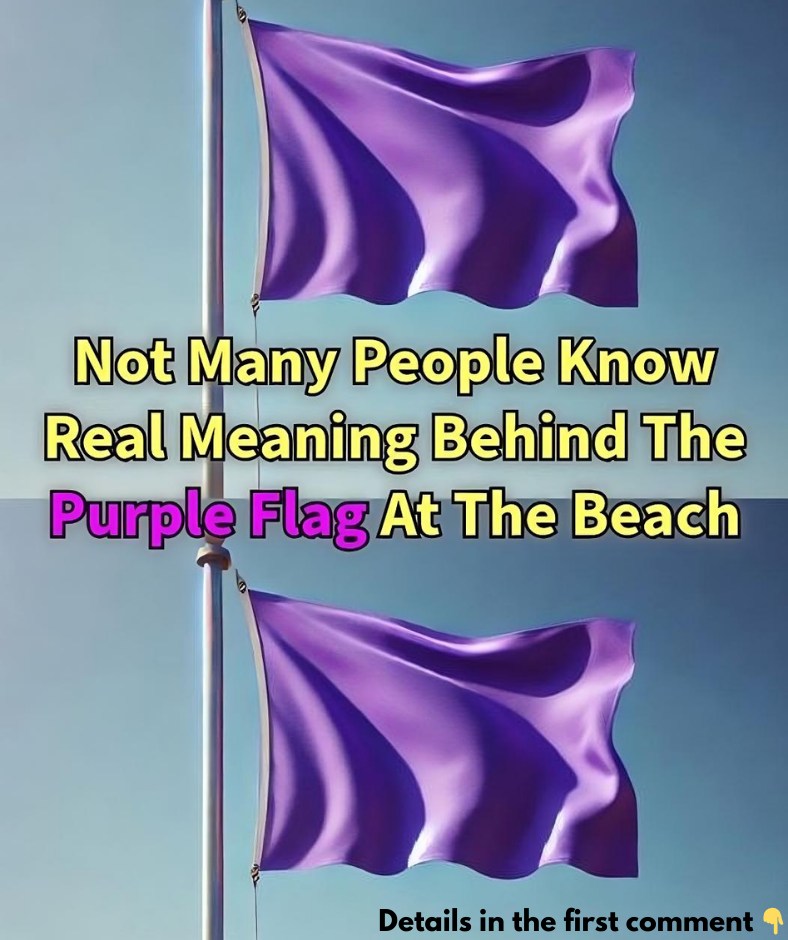As a beach enthusiast, I’ve spent countless hours basking in the sun, playing in the waves, and embracing the sandy shoreline. But recently, I noticed a purple flag waving on the beach—a color I wasn’t used to seeing. While we’re all familiar with green, yellow, and red flags signaling water conditions, the purple flag was a mystery. If you’re curious about what it means, you’re not alone. It turns out, the purple flag has an important message for beachgoers.

Understanding Beach Flag Warnings
Picture this: you’re at the beach, ready to dive into the ocean. You spot a green flag, indicating calm waters, or a yellow one, reminding you to be cautious. But when you see a purple flag, it adds an unexpected twist to your beach day. This flag has a unique meaning that’s worth knowing.
The Meaning of the Purple Flag
After seeing the purple flag, I had to find out what it represented. It turns out, the purple flag is a warning about marine life that could be a potential hazard to swimmers. It signals the presence of marine pests, such as jellyfish, stingrays, or other sea creatures that might pose a threat. The ocean may be a beautiful place to swim, but the purple flag reminds us that it’s also home to these unpredictable “guests.”
Marine Pests: What to Be Aware Of
When the purple flag is up, it’s a sign that the ocean may have some potentially dangerous marine life beneath the surface. Jellyfish, with their stinging tentacles, are one of the most common creatures that lead to this warning. However, other sea animals like stingrays could also be present. So while it’s generally safe to enjoy the water, the purple flag urges us to be cautious and aware of potential risks.
A Refresher on Other Beach Flags
Besides the purple flag, there are several other beach flags you should know about:
- Green Flag: The water is calm, making it ideal for swimming.
- Yellow Flag: Moderate hazards exist, so be careful and pay extra attention to water conditions.
- Red Flag: The water is hazardous, with rough waves or strong currents, so only strong swimmers should enter.
- Double Red Flag: Water entry is prohibited due to extreme conditions; swimming is not allowed.
These flags are essential to keep beachgoers informed, helping everyone make safer choices when deciding to swim.
Why the Purple Flag Is Important
The purple flag’s message is simple: “Be cautious—marine life could pose a risk.” It’s a reminder that the ocean is a vibrant ecosystem, home to many species beyond the waves and sand we enjoy. These creatures are a natural part of the ocean’s environment, and the purple flag encourages us to share the space with them safely and respectfully.
Staying Safe When You See a Purple Flag
If you notice a purple flag flying at the beach, here are some steps to take to ensure your safety:
- Stay Informed: Speak to a lifeguard or beach official to learn more about the specific marine pests that may be present.
- Be Cautious: If you do decide to swim, remain vigilant, especially in shallow areas where stingrays may be hiding.
- Protect Yourself: Wear protective clothing like rash guards, which can help prevent jellyfish stings, or use anti-sting creams if they’re available.
- Spread Awareness: Let other beachgoers know about the purple flag’s meaning so everyone can stay safe.
Respecting Ocean Warnings
The purple flag serves as a respectful reminder that the ocean, while alluring, is also home to creatures that deserve our caution. Jellyfish, stingrays, and other marine animals play essential roles in the ocean’s ecosystem. By understanding their presence, we can enjoy the beach more responsibly, staying safe while coexisting with the sea’s natural inhabitants.
Conclusion: The Ocean’s Subtle Warning
The next time you’re at the beach and see a purple flag, remember that it’s the ocean’s way of reminding you to be careful. This signal helps us appreciate both the beauty and the potential dangers of the sea. By understanding and respecting the beach’s flag system, we can enjoy the beach while staying informed and safe. So go ahead, enjoy your beach day, but keep an eye on those flags—they’re there to ensure that everyone can experience the ocean with safety and respect.





